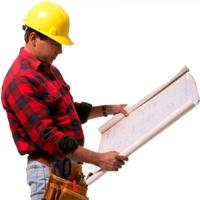Down and Dirty - Understanding Your Soil
by Dan Eskelson on Apr 29, 2012
The very first consideration in new landscaping should be the condition of the native soil; the most beautiful design and efficient planning will go to waste if the landscape is installed in a poor soil environment. Soil is a living, breathing ecosystem, and requires a thorough understanding before any landscape installation is begun for a basic soil discussion).
You should be able to classify your soil as sandy, clay-based, or ideally, somewhere in between. The amount of organic matter present in the soil is also important, as well as its relative acidity (pH). Understanding your soil allows for the correct choice of amendments and fertilizers - for example, very sandy soil requires lots of organic matter, rich in nutrients. a soil heavy with clay will also benefit from organic matter, but perhaps not as much and not as rich in nutrients.
Sandy soils will require more irrigation - clay soils require very careful irrigation so they are neither waterlogged or too dry. The proposed plant material may also have a bearing on soil requirements; if you have some very shady areas, the types of plants grown are often classified as woodland plants and need moist, but well-drained soil. and many of these, like the azalea, prefer acid soil (pH less than 7). So your "ideal" soil may vary from point to point at your site. For this reason, it's wise to group plants according to their soil, moisture, and other cultural needs. For more information on plant pH preferences. Either take the time to understand and test your own soil, or hire a landscape professional to prepare a report for you. Here in the states, local county extension agents often can arrange for an economical soil test. also, consulting with local gardeners and landscapers often yields important information on regional soil issues. Consider how well your soil drains. are wet areas the result of natural low spots or poor subsoil drainage - or both?
You may need to create swales to channel excess water away from your home and away from plant roots. For very wet areas, consider raised beds, either with borders or built as gentle berms - the increased height and improved soil will help to keep plant roots out of standing water. Drainage may be so poor in some areas that you will need to install tiles or other prefabricated drainage systems. The best way to determine drainage characteristics is to observe your site during a very wet storm - The second best would be to flood the area with lots of water from your hose.
When adding soil amendments to your native soil, mix the two thoroughly with a rototiller or tractor-mounted tool. For very sandy soil, four to six inches of rich organic matter (like commercial compost) should be mixed with the top ten inches of soil. If you have the machinery to cultivate deeper than ten inches, use even more amendments. Organic fertilizers can be incorporated into the soil at the same time as the bulk amendments. Blood meal, bone meal, alfalfa meal, cottonseed meal (especially for evergreens and acid-loving plants), kelp, and other natural materials will release slowly to provide nutrition for your plants for several years. Your exact choice of fertilizers will depend on the results of your soil test and on the specific plants grown... (I found that bone meal, with its abundant phosphorus, is an excellent addition to the topsoil under new sod). If you add topsoil to your site, check it carefully and ask for references from satisfied users before you order.
What is called topsoil, and even looks like topsoil, may be extremely poor in texture or chemistry. as an example - a local excavator sells a "topsoil" product here that looks and feels very nice - even smells good! But it has such a high percentage of undecomposed wood waste that all available nitrogen is tied up in the decomposition process, and all plant material turns yellow! In general, it's more cost-effective, and often produces better results, to improve your native soil with amendments - check carefully for quality and ask for references from satisfied users. Your investment in soil preparation will more than pay for itself in excellent plant health and vigor, lower water requirements, and increased plant resistance to disease, insects, and other environmental stresses.
Popular Articles
Three Places to Spend Money on the Exterior of Your Home
When you have the exterior of your home remodeled, you are investing, time, energy and convenience into the project and you want to make sure that...
105274 Views
Homemade Headboards-Make an Upholstered or Wooden Headboard
Homemade headboards can add a lot of personality to any bedroom. They can be coordinated with existing furniture and room decor or they can be the...
80314 Views
When to Use a Brush, Roller or Sponge Brush
Brushes are a good choice for painting trim and woodwork. They are also useful for cutting in the edges around the top and bottom edges and corners...
72943 Views
Creating a Cottage Kitchen with Bead Board
Kitchen decor can range from modern and bold to elegant and elaborate by using strategic kitchen pieces. One of the most popular decorating trends...
58721 Views
Gas Fireplace Diagnostics and Troubleshooting
Follow these steps for diagnosing and troubleshooting Gas Fireplaces repairs. For the average DIYer, this may seem intimidating, depending on the...
35734 Views
Latest Articles
Why Professional Boiler Repair is Essential for Home Safety and Comfort
Maintaining a warm and safe home environment is paramount for any homeowner. Your home's boiler system plays a critical role in this, but what...
on Nov 5, 2025
How to Keep Your Home Warm in the Winter
How to Keep Your Home Warm in the WinterAs winter approaches, keeping your home warm becomes a priority for comfort and health. Efficient heating...
on Oct 29, 2025
Why Reliable Furnace Repair is Essential for Winter Comfort
As the cold season approaches, homeowners recognize the critical role that a well-functioning furnace plays in ensuring a warm and cozy living...
on Oct 29, 2025
How Much Does it Cost to Take a Bath?
Plumbers know that a bath may seem like a relaxing luxury, but the real cost extends far beyond your water bill. The average soak uses 35 to 50...
on Apr 8, 2025
10 Concrete Patio Ideas on a Budget
A concrete patio can be a game-changer for your outdoor space. It is durable, versatile, and can be customized to fit your style. But what if you...
on Mar 25, 2025
Featured Articles
What Type of Licensed Contractor Should You Hire?
on Feb 28, 2017
Hire Contractors / Estimates

Looking for a specialty project? There are many types of contractors available for your home improvement needs. Finding the right type of...
Actions
Top Categories
- Garden / Landscaping / Patio — 264
- Kitchen / Bathrooms — 240
- Real Estate / Finance — 203
- Appliance / Repair — 186
- Interior Design / Decor — 184
- HVAC / Air Conditioning — 150
- Cleaning / Maintenance — 144
- Improvements / Remodeling — 131
- Plumbing / Basements — 118
- Floors / Tile / Hardwood — 116
- Safety / Security — 114
- Doors / Garages — 113
Articles Archive
More DIY Articles
Drainage Problem Warning Signs
Drainage problems rarely happen, but when they do it could easily evolve into a major drainage problem. It is important to know that a drainage...
Bathroom Countertops: Top Factors to Consider to Make the Right Choice
A classy and beautiful countertop can give a quick makeover to your bathroom. They are available in a huge range of styles, colors and patterns....
Installing Elegant Wrought Iron Fence – Four Reasons Why You Should Do It
For the sturdiest protection from thieves and the strong wind among other possible harm for your home, there is nothing better than an iron fence....
Stamped Concrete – What You Need to Know
You can find at least a hundred stamped concrete patterns and designs. This is how popular this decorative concrete application is. Most...
How to Safely Use Power Tools
With the winter well and truly out of the way and hay fever in the air, you know that it’s about time to start thinking about DIY. Your window for...

